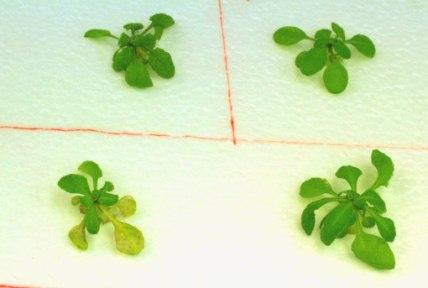Analysis of salt tolerance in three widely used accessions of Arabidopsis thaliana: a photosynthetic approach

Abstract
Salt stress is one of the major problems in the present world’s agriculture. Plants encounter drought stress, even in the availability of water because of osmotic imbalance in the cell due to accumilation of excess salts. Plants avoid water uptake, which in turn decreases the photosynthetic activity. In this work, we measured the effect of salt stress on three accessions of Arabidopsis thaliana (Columbia (Col-0), Landsberg erecta (Ler-0), Wassilewskija (Ws-4)) by subjecting the plants to stress with 0-150 mM NaCl followed by recovery in a hydroponic system. The impact of the stress was clearly observed in all three accessions during stress and recovery period. Chlorophyll content in leaves decreased with increasing salt concentration. Proline levels increased during salt stress conditions. Non-photochemical quenching(NPQ) and PSII activity slightly decreased under stress conditions. Salt treated plants showed slow acidification of lumen with delayed Non-photochemical quenching in recovery phase. Ler-0 was the most sensitive ecotype to salt stress followed by Ws-4 and Col-0.
Key Words: salt tolerance, photosynthetic activity, chlorophyll fluorescence, Arabidopsis ecotypes.
Responsible for this page:
Director of undergraduate studies Biology
Last updated:
01/30/12
